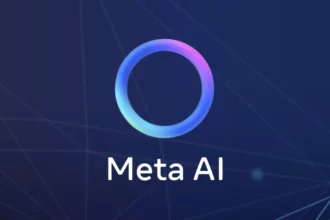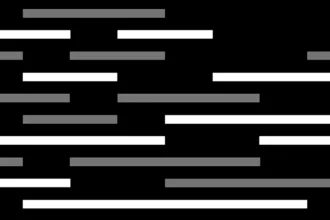Table of Contents
ToggleClaude 2 vs GPT-4: A Comparative Analysis of Two Leading AI Models
Claude 2 and GPT-4 are two advanced large language models (LLM) redefining AI’s capabilities. Both excel in natural language tasks but differ in design, strengths, and targeted applications. Choosing between them depends on what users prioritize: contextual depth and ethics or versatility and multimodal functions.
Overview of Claude 2 and GPT-4
Claude 2, designed with a focus on long-context processing and ethical guidelines, offers a unique approach to AI interaction. In contrast, GPT-4, the flagship model by OpenAI, integrates multimodal capabilities and extensive plugin support.
Both are utilized across industries, from coding and research to customer service, shaping how AI supports human tasks.
Claude 2: Strengths and Applications
Claude 2’s standout feature is its ability to manage up to 100,000 tokens in a single input. This extensive token capacity enables it to interpret and reason with deeply contextualized information. It is particularly reliable for tasks demanding logical reasoning, coding, and mathematical problem-solving.
Ethical AI is a core principle for Claude 2. Its embedded “constitution” guides it to avoid generating harmful or biased content, promoting responsible AI use. This makes Claude 2 a preferred option for projects where ethical considerations are paramount, such as healthcare or social justice initiatives.
- Data Analysis: Handles large datasets well, providing direct references and minimizing hallucinations.
- Content Creation: Produces context-rich, accurate writing, with fewer unsupported inventions.
- Coding: Assists in software development, including debugging and automating repetitive tasks.
GPT-4: Features and Uses
GPT-4 shines as a versatile tool with its multimodal capabilities, allowing it to interpret text, images, documents, and code. This flexibility extends its use to various sectors, including research, marketing, and medical fields.
Built on a Mixture of Experts (MoE) architecture, GPT-4 balances power and efficiency. It scores impressively on standardized tests like the GRE, demonstrating strong problem-solving abilities. Additionally, its extensive plugin ecosystem expands its real-world applications.
- General Writing: Generates polished emails, reports, and marketing content, saving significant editing time.
- Research Assistance: Summarizes and analyzes large volumes of data, excels at exploring future trends and insights.
- Multimodal Interpretation: Analyzes images, supporting fields like medical imaging.
- Chatbots: Enhances customer support with human-like conversational abilities.
Head-to-Head Comparison: Claude 2 vs GPT-4
| Feature | Claude 2 | GPT-4 |
|---|---|---|
| Token Limit | Up to 100,000 tokens, suited for deep context | Lower token limit, focused on balanced context |
| Ethical Guidelines | Embedded “constitution” directs responsible responses | Ethics addressed, but less emphasis on explicit constitution |
| Multimodal Capability | Primarily text-based | Supports text, images, documents, and code |
| Application Strength | Data analysis, coding, and ethical use cases | General writing, research, customer service, multimodal tasks |
| Plugin Ecosystem | Limited, emerging | Extensive and mature |
Choosing Between Claude 2 and GPT-4
Both models are advanced but serve different niches. Claude 2 is excellent for handling massive data inputs and prioritizing accuracy and ethics. GPT-4 excels in versatility and multimodal output, bolstered by an active plugin ecosystem that broadens its usability.
For data-heavy projects requiring precise referencing and ethical safeguards, Claude 2 may offer advantages. Conversely, projects demanding varied input types or integration with numerous applications might benefit more from GPT-4.
Key Takeaways
- Claude 2 processes larger text contexts and emphasizes ethical AI use through a guiding constitution.
- GPT-4 supports multimodal inputs and has a broad plugin ecosystem enabling diverse applications.
- Claude 2 excels at data analysis and accurate content creation with low hallucination risk.
- GPT-4 is ideal for versatile tasks including writing, research, customer interaction, and image analysis.
- The best choice depends on project priorities: depth and ethics (Claude 2) versus flexibility and multimodal support (GPT-4).
Claude 2 vs GPT-4: The Ultimate AI Showdown
Want the short answer? Claude 2 and GPT-4 are both cutting-edge AI language models, but Claude 2 excels with huge context windows and ethical design, while GPT-4 dazzles with multimodal skills and unmatched versatility. Let’s unpack what makes these two AI titans tick, and why their differences matter.
If you’re an AI aficionado, developer, or decision-maker, this tasty Intel will help you choose the right model—or at least nerd out over the tech giants battling it out under the hood.
Meet The Contenders
Artificial intelligence is reshaping tech faster than you can say “machine learning.” And at the core of this transformation are large language models (LLMs)—the brilliant interpreters of human text like GPT-4 and Claude 2. They take in language, then output astonishingly human-like responses, code, reasoning, and more.
OpenAI’s GPT-4 is a familiar name, the crown jewel behind ChatGPT, celebrated for its multi-talented skillset. Anthropic’s Claude 2, by contrast, is the ambitious underdog turning heads with some niche superpowers and an ethical heart.
The Claude 2 Advantage: Huge Context and Ethics First
Claude 2 might be the new kid on the block, but it’s no lightweight. It processes up to 100,000 tokens. To put that in perspective: that’s roughly enough to read and remember the contents of an entire novel or a detailed legal document all at once.
This massive context window lets Claude 2 handle complex, lengthy inputs—ideal for deep-dive analysis, coding, and logical reasoning. It’s well-regarded for GRE writing, programming tasks, and math problem-solving. (Yes, AI tackling calculus while you grab a coffee.)
Claude 2’s coding skills are already impressing developers who use it to automate repetitive work or debug tricky scripts. I’ve personally heard praise about its coding help, though a head-to-head coding battle with GPT-4 is still brewing.
What truly sets Claude apart is its ethical framework. The model follows a “Constitutional AI” strategy—a set of guiding principles inspired by the UN’s Declaration of Human Rights and platform guidelines. This means Claude emphasizes safety and cautious, responsible responses. When it doesn’t know something, it prefers to say “I don’t have a good answer” rather than guess wildly, keeping hallucinations in check. This makes Claude a solid choice for sensitive areas like healthcare or social justice projects.
GPT-4’s Multimodal Magic and Powerhouse Performance
GPT-4 is the reigning champion of LLMs, powering everything from polite chatbot conversations to complex research assistance. Its wizardry lies in its multimodal capabilities: understanding not just text but also images, documents, and code. This versatility unlocks applications across fields including medical imaging and beyond.
Backed by OpenAI’s massive research muscle and funding, GPT-4 operates on a unique “Mixture of Experts” architecture—a fancy way to say it uses a team of specialized models that combine their smarts. With an estimated 1.76 trillion parameters spread across multiple expert models, GPT-4 has exceptional raw brainpower.
It excels academically, famously scoring high on exams like the GRE and delivering nuanced answers to tough questions. GPT-4 doesn’t just answer queries—it can generate essays, jokes, solutions for complex problems, and even handle multilingual requests with finesse.
Thanks to OpenAI’s robust plugin ecosystem, GPT-4 can also extend its capabilities with thousands of third-party tools, covering everything from customer support chatbots to advanced coding assistants. GPT-4 is basically an AI Swiss Army knife.
Claude 2 vs GPT-4: When to Pick Which?
Both models have impressive strengths but shine in different arenas.
Data and Analysis
Claude 2’s ability to process huge amounts of information without hallucinating makes it a go-to for real-time data analysis. From personal experience using both models on datasets, Claude’s direct referencing tends to win out over GPT-4’s occasional creativity-induced inaccuracies here.
Pro-tip: Use Claude 2 when you want reliable, fact-based data crunching without the risk of AI inventing things on the fly.
Research and Forward-Looking Insights
But if you want your AI to be a creative thinker, ideating new conclusions or projecting trends from large amounts of context, GPT-4’s creative muscle flexes stronger. It turns raw data into insightful foresight—helping in fields like market research or scenario planning where imagination meets information.
Content Creation and Coding
Both Claude 2 and GPT-4 generate rich, context-aware writing. Claude 2 typically refrains from speculation, prioritizing accuracy, making it preferable for clear, safe content generation. GPT-4, meanwhile, brings flair, humor, and versatility—great for marketing, storytelling, and all-around writing.
In coding, Claude’s rising reputation for accuracy and logic is notable, while GPT-4 has a proven track record with a wider support ecosystem. A full comparison test is forthcoming, but initial feedback sees Claude performing well in Python and other programming languages.
Ethics and Safety
Claude 2 brings a unique focus to ethical AI, ideal for projects where moral guidelines and responsibility are non-negotiable. GPT-4’s outputs can be wide-ranging and sometimes uncertain, though its safety guardrails are robust and continuing to evolve.
Pricing and Accessibility
Cost is always a factor. Claude 2.1 is more cost-efficient at roughly $11 per million tokens versus GPT-4’s higher price. Plus, Claude’s massive 100k token context window dwarfs GPT-4’s 32k tokens, meaning you can feed Claude a lot more text at once—up to 75,000 words—imagine summarizing entire books in one go!
Both Claude and OpenAI offer free access tiers, with premium subscriptions priced similarly around $20 per month, so accessibility remains friendly for hobbyists and pros alike.
Freshness Matters: Training Data Recency
Claude 2 is the newcomer by about a month but boasts more recent training data (up to early 2023), while GPT-4’s dataset cutoff sits around September 2021. This edge might make Claude slightly more aware of recent events or terminology—unless you want a historical deep dive!
Real-World User Experiences
Users often report Claude 2 is less prone to “hallucinating” false facts; instead, it opts out when unsure. GPT-4 sometimes excels in creativity but occasionally generates incorrect or unverifiable outputs. This tradeoff influences which model suits your application.
Example: When I tested Claude 2 for drafting a blog, it politely declined providing a potentially incorrect response rather than fabricating a misleading answer. A subtle display of ethics in action.
The Final Call: Claude 2 vs GPT-4 – Who Wins?
To put it bluntly: there’s no one-size-fits-all winner. If you want powerful general-purpose AI with multimodal abilities, large ecosystem support, and versatility, GPT-4 is the reigning champ.
However, Claude 2 is the dark horse for anyone who values safety, ethics, and the capacity to process ultra-large contexts efficiently, especially when fidelity is critical.
Think of it like this—Claude is your cautious friend who double-checks facts and stays principled. GPT-4 is that brilliant polymath who can juggle a million tasks and think ahead like a visionary.
Looking Ahead: What This Means for AI Users
The rivalry drives innovation. Both companies push boundaries, fuel research, and offer users top-tier AI solutions. They reflect different philosophies: one championing ethical guardrails, the other scale and flexibility.
Whether you’re crafting AI-assisted content, analyzing complex data, building conversational bots, or coding, studying these models helps tailor your tech stack wisely. And no doubt, both Claude 2 and GPT-4 will evolve rapidly, closing gaps and extending capabilities.
So here’s a challenge: What would *your* perfect AI look like? How would you combine the best of Claude’s ethics and massive context with GPT-4’s multimodal wizardry?
Summary Table: Quick Comparison
| Feature | Claude 2 | GPT-4 |
|---|---|---|
| Context Window | 100,000 tokens (huge!) | 32,000 tokens |
| Focus | Ethical AI, safety, accuracy | Versatility, multimodal inputs, plugins |
| Training Data Cutoff | Early 2023 (more recent) | September 2021 |
| Parameter Size | Not publicly detailed | 1.76 trillion (Mixture of Experts) |
| Pricing | ~$11 per million tokens | Higher, ~$20 per month upgraded tier |
| Core Strength | Long contexts, professional exams (GRE, bar), less hallucination | Multimodal, advanced coding, broad ecosystem |
Ultimately, both Claude 2 and GPT-4 are pushing what we thought possible just a few years ago. It’s an exciting time to be involved in AI. Make your choice based on your needs, ethics, and budget — and watch these models keep dazzling us.
What are the main differences in token processing between Claude 2 and GPT-4?
Claude 2 can process up to 100,000 tokens, allowing it to handle long contexts with deep reasoning. GPT-4 supports large inputs too but focuses more on versatility with text and images.
How do Claude 2 and GPT-4 differ in handling ethical AI concerns?
Claude 2 has a unique set of guiding principles—its ‘constitution’—that promotes ethical behavior and accuracy. GPT-4 is reliable but does not specifically highlight ethical constraints as a core feature.
Which model performs better at data analysis and why?
Claude 2 excels at analyzing large datasets and referencing facts directly without hallucination. GPT-4 is good at synthesizing insights creatively but can sometimes generate inaccurate data.
How do their multimodal capabilities compare?
GPT-4 supports multimodal inputs such as images and documents, making it versatile across tasks. Claude 2 focuses mainly on text and coding but does not emphasize multimodal features.
For coding and software development, which model should I choose?
Claude 2 shows strong coding assistance, including debugging and automation, with fewer hallucinations. GPT-4 is competent but Claude is gaining attention for practical coding support.
What use cases highlight each model’s strengths?
- Claude 2 shines in ethical AI projects, large-scale data analysis, and accurate content creation.
- GPT-4 excels in multimodal tasks, creative research, and producing polished business writing efficiently.




